A Look at the Construction Industry 2020 -
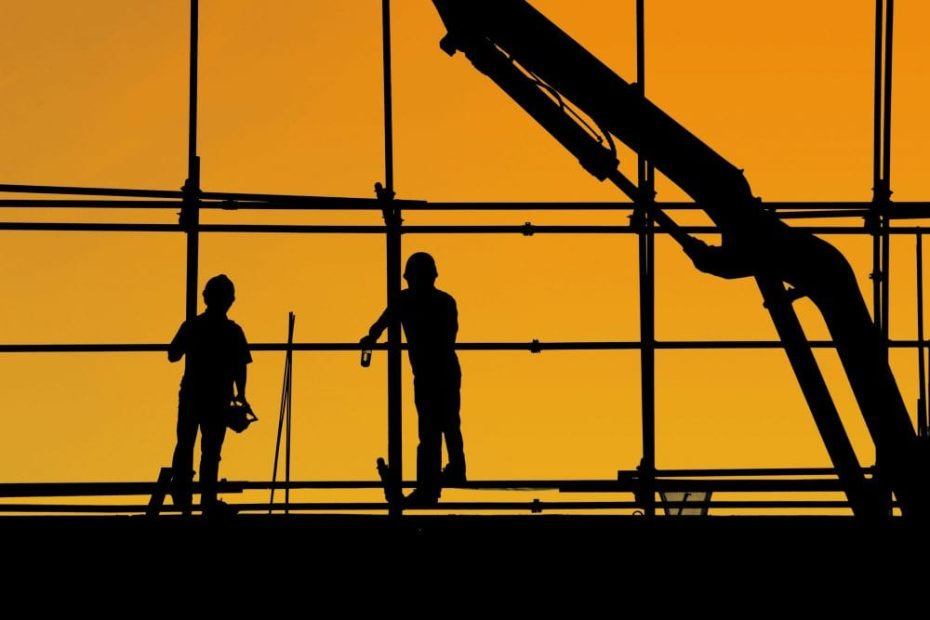
What’s Going on in the Construction Industry? Everything You Need to Know
From cranes vanishing to material costs rising, it’s needless to say that the construction industry is currently in between a rock and a hard place. In an effort to inform and educate all parties involved in the construction industry in some way, shape, or form, we have compiled a summary of all the topics we think you should be aware of. Sit back, grab a cup of Joe, and (try) to enjoy the ride. (You may also want to have your counterpart(s) on speed dial to share with them what you just discovered.)
An Increase in Backlog Numbers for August – A Change for the Better?
Ever see something and it’s too good to be true, so you have to stop and double-take? Well, that’s what happened this/last week in the construction industry. New data surfaced revealing new construction jobs, starts, and backlogs. *Queue cheering audio*
By the end of summer, the industry saw nonresidential building start to increase by 16%, with infrastructure projects increasing by a whopping 40% in August. But the growth did not stop there. After much torrential downfall from the COVID-19 pandemic, thousands upon thousands of construction professionals lost their jobs. However, 59% of those jobs were recovered by the end of July, says Marcum, a New York City-based accounting firm.
Does this now mean that the construction industry is on the up and up? Well while we can appreciate the sunny days, there is no sunshine without rain. Regardless of the recent rebound, the construction industry has experienced, there are still some areas of concern going forward. Some of the challenges the construction industry will continue to face include stricter credit conditions, insufficient state and local government funding, and increased commercial vacancy costs.
It’s Sunny Outside, But Where Are My Employees?
While the construction industry has experienced some degree of a rebound, construction companies near and far still have one common issue at hand: employees are not returning to the jobsite because of the coronavirus.
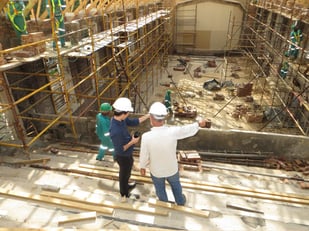
Here are some measures construction managers can take to try and make employees feel more comfortable returning to the jobsite:
1. Have a conversation with the employee to determine what their true concerns are.
2. Put a strong emphasis on the steps you are taking to make the jobsite safe and secure (i.e. mask requirements, social distancing, etc.)
3. Get HR involved if an employee is steadfast in not returning and mention these three employment laws: The Occupational Safety and Health Act, the Americans with Disabilities Act (ADA), and the National Labor Relations Act (NLRA)
It is a tough time for everyone, but being attentive and a good listener can make all the difference in getting your team back together.
It’s Good to be in the Know – Construction Industry Key Trends 2020
The construction industry is one of the industries that has experienced consistent growth for the past decade. While it is a good and stable position to be in for construction and engineering professionals, it’s important not to get too comfortable because things can change rather quickly, especially now.
To save you the time, we have collected the key trends currently at play in the construction/engineering industry that you should know like the back of your hand:
Economic Ambiguity – The world economy is in shambles if you haven’t heard already. But your construction firm doesn’t need to be. Although the construction industry is very closely tied to the general economy, construction firms can attempt to get ahead of the curve by reevaluating where current projects are and by developing a plan to keep operations in motion.
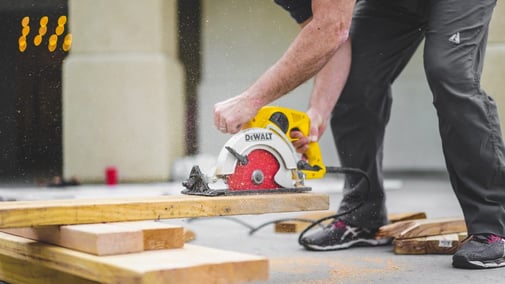
Labor Shortages – Recruiting top talent in the construction industry has never been a walk in the park for a host of reasons. And as baby boomers near retirement, an even greater void will be created in the market where construction firms will struggle to hire qualified labor. However, companies still in business today who are willing and prepared to supply less-experienced employees with quality training may be able to avoid the turbulence associated with labor shortages.
Younger Workers – Did you know a mere 3% of people between the ages of 18-25 have an interest in pursuing a career in construction (National Association of Home Builders)? The construction industry is one of the greatest industries to work in, with extremely remarkable technology, unwavering job stability, and invaluable mentorship programs. But the younger generations don’t know this.
Challenges are opportunities, and in a landscape where much of life has slowed down, construction companies should do everything in their power to learn how to appeal to younger workers better.
Technology – We love working smarter and not harder, and here are some up and coming technologies designed to improve the construction industry:
· Smart Project Management: Real-time data used to make more informed decisions on scheduling and purchasing.
· Drones: Used to take high-quality aerial photos of projects and can provide sight in places where the human eye can not physically be.
· Wearables: Created to collect crucial jobsite data, such as worker biometrics and employee’s location.
· GPS & Telematics: Designed to detect unsafe driving behaviors.
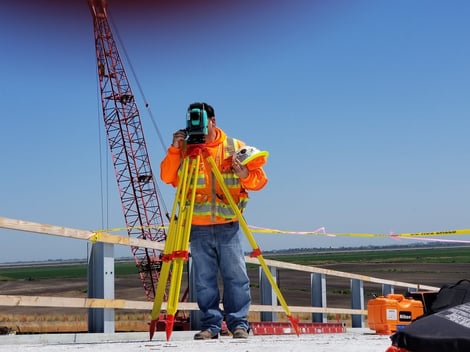
Substance Abuse – A sad truth associated with the construction industry is substance abuse, and construction workers are far more likely to develop a substance abuse disorder when compared to other industries (Shatterproof).
Injuries at construction sites occur too frequently, and again, construction companies have the opportunity to make a change. Business owners must make it a priority to safeguard worksites by connecting workers with certified medical professionals who can guide them towards less addictive medications. A safe jobsite starts with your employees.
Defect Claims – We have been witnessing an increase in unfinished site projects that run the risk of being exposed to vandalism, weathering, and more. As a result, fear regarding defect claims is top of mind. To alleviate some of this concern, construction firms are strongly advised to reassemble quality control programs in the wake of the COVID-19 pandemic.
Prefabricated & Modular Construction – Has your company been considering implementing one or both of these construction processes? If so, continue reading. While very popular in the industry, these two widely different procedures can invite (unwanted) insurance exposures that include risk transfer and material transport exposure. Be sure these methods are right for your business before you are caught with your hands tied.
Insane in the (Mem)Crane – Where Have the Cranes Gone in Continental North America?
If you haven’t noticed, the skies are becoming more clear, and we aren’t speaking in terms of pollution. According to a recent study, the number of cranes has decreased for the first time since 2017. However, surprisingly enough, our beloved capital, Washington D.C., saw an increase in cranes, while other cities, such as Chicago, Denver, and Las Vegas experienced a major drop in the number of cranes between 27% and 76%.
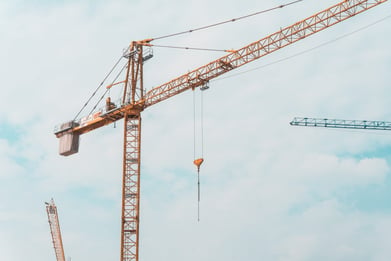
Sunshine on a Cloudy Day: COVID-19 Solutions & Tips
We hate to sound like a broken record, but the novel coronavirus has impacted all industries from retail to hospitality, and construction is no exception. It can be hard to see the light with respect to the pandemic and its lingering effects and depending on your choice news outlet, some forecasts even claim that construction industry growth is now down to 0.5% from an earlier figure of 3.1%. But despite the depressing news, here at Ryan & Wetmore, we always believe that challenges are merely opportunities in disguise. An opportunity that is digital.
Below are some digital solutions to add to your toolkit as a construction decision-making professional to use and implement before, during, and after a challenge arises:
Optimize for Profitability
You know how the saying goes, “Cash is king,” and boy is that even more applicable now. Cash reserves allow you to be prepared for the future that is digital. Additionally, having an expanded line of credit could be the difference between life and death when dealing with cash flow issues caused by supply chain disruptions. Now is the time to call your bank to discuss if your current line of credit meets your working capital needs
We encourage construction and engineering companies alike to take a second (or third) look at operating models, looking for cracks in the foundation. Take a moment to also review functional structures and always seek out ways to automate, this will ensure greater profitability for the future.
Safety First, But Make it Smart
In the day and age that we are living in, one (easy) way to be precautious and prevent the spread of the coronavirus is to allow remote work when possible. Now more than ever, it is of great importance that virtual systems are up-to-date and robust in nature, to pave the way for a smooth digital workplace.
Spread the Love – A Diverse and Agile Supply Chain
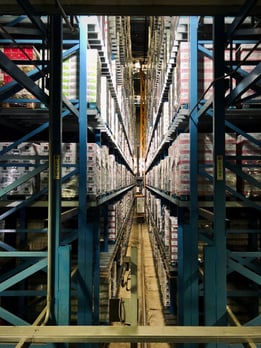
As we mentioned earlier, companies may face some pushback from employees who do not want to return to the worksite, either because they fear contracting the virus or because they simply aren’t ready to stop receiving government benefits. Whatever the case may be, this might not be such a bad thing.
Consider distributing employees more equally across the worksite, (virtual) office, and factory. In turn, this will also increase your competitiveness in terms of labor costs and project scheduling.
There is No Return to the Past, Make the New Norm Work
Just like any scenario on a given day, errors and mistakes are inevitable. But because of the pandemic, malfunctions are something we must become used to and prepared for. The only way to make the current state of affairs work for your construction or engineering company is to understand the true influence that COVID-19 has on each and every project.
Knowing this, decision-makers need to continuously review and reconfigure project planning, which involves accounting for project margin slippage in expenses and time. Simultaneously, companies should also be having discussions with stakeholders to set forth new milestones and goals.
Survival of the Fittest
The crocodile – an animal that has ancestry dating back to the time of the dinosaurs – has been able to not only survive but flourish in the swamplands because it was able to adapt to the times.
Construction and engineering companies need to be like the crocodile and pivot from barely breathing to creating value. How does one do this? Start by reacquainting yourself with the construction/engineering ecosystem. Then, develop new business models that make sense for the times. Finally, look at things from a collaborative point of view; Reward risk-takers and long-term partnerships.
Now is not the time to shrivel up and hide away. Now is the time to transform and shake off old traditions from the past that frankly, probably weren’t working anyway. At the end of the day, companies who are digitally savvy, equipping workers with collaborative tools, who save money by automating low value-added activities, and who leverage relationships with third parties, will be the crocodile in the COVID-19 era and beyond.
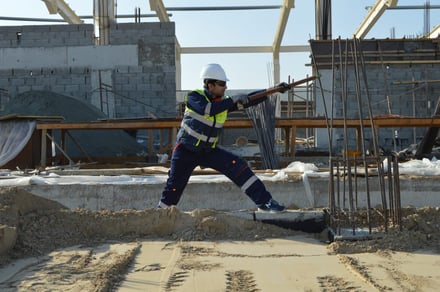
The entire market landscape has changed as we know it, and in the next couple of months, it will only become more uncertain. That is why it is imperative for all parties in the construction industry to develop an integrated approach between tax/financial statement planning and relationship building with bonding companies to provide security for the upcoming political landscape.
For more information on any of the topics discussed above and to learn more about our multipart plan to get your business through the next wave of madness, please contact our construction team, spearheaded by Jason Dudas, Senior Manager and CPA at Ryan & Wetmore.
Today’s Thought Leaders

About Jason Dudas
CPA & Senior Manager
Jason is a Senior Manager in our Vienna, VA office. Since joining the firm in 2009, he has worked closely with clients on tax, audit and accounting issues. Jason has become an expert in construction accounting and is a member of the Real Estate and Construction CPA’s. He also has experience with research and development credits, and tangible property regulations.


